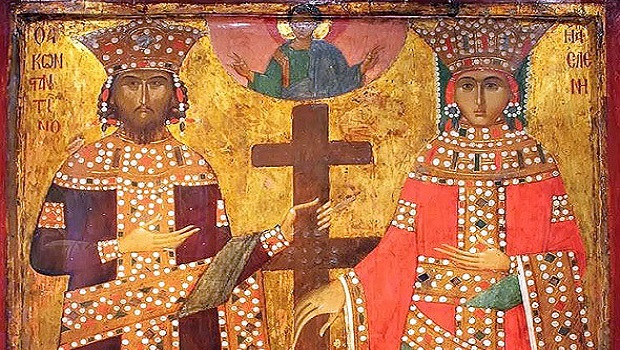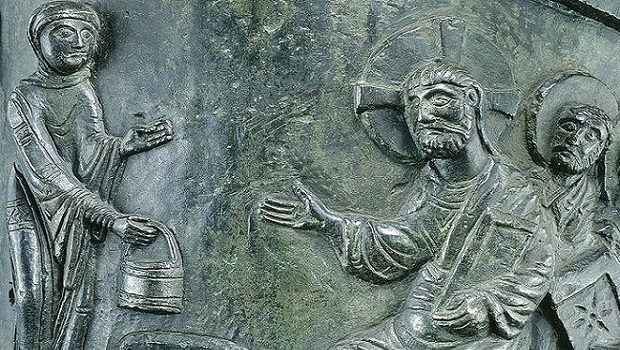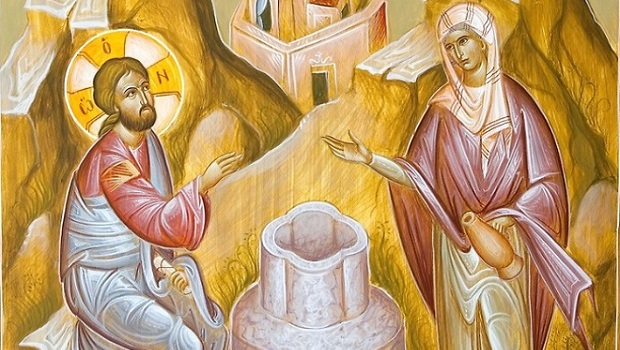Metropolitan of Pisidia Sotirios
Our Orthodox faith, my beloved friends, is called ‘symbolic’, because it’s expressed in symbols. In other words, it’s expressed in simple signs, though these actually have profound significance and meaning. One of these signs, the most important and most sacred, is the Cross. We shouldn’t see the Cross merely as two bits of wood nailed together, one vertical and the other horizontal, but we should think about what happened on that configuration. As you all know very well, my Christian friends, one day, a Friday, on a hill, Golgotha, the incarnate Son of God was nailed to this shape by the lawless Jews and suffered a painful death. But this death of the Lord was redeeming. For those who believe, this death is salvation from their sins.
From ancient times, people offered sacrifices for the remission of their sins. Remember Abel, who offered sheep to God. But these animal sacrifices in the Old Testament weren’t able to expunge sins. These sacrifices prefigured the great Sacrifice on Golgotha, the Sacrifice of Jesus Christ, which truly does away with our sins, because it was perfect, the Sacrifice of the Son of God. That’s right, my friends. That’s how we should see the death of Jesus Christ on the Cross. As a sacrifice, an offering, on the part of Jesus Christ to His heavenly Father on behalf of us, for the redemption of our sins. In this, we see the great love of God, our Father, Who, for our sake, gave up His only-begotten Son to death on the Cross. Those who believe in Him will not perish, but will have eternal life.
My fellow Christians! No matter how many and how great your sins are, don’t despair. Look at the Cross. See it in your mind, with the Lord crucified on it. Why was Christ crucified? For our sins. The blood of Jesus Christ, which flows from His pierced hands and feet, this Sacrifice on Golgotha, washes away and cleanses all our sins (see 1 Jn. 1, 7). And this blood is in the Holy Chalice at the Divine Liturgy. As the priest says to every one of the faithful who takes communion, it’s for ‘the remission of sins’.
My friends, let us honour the Precious Cross. Because, by honouring the Precious Cross, we also honour Jesus Christ, Who was crucified upon it. Every home should have an icon of Christ on the Cross. And not only in our homes, but on ourselves. If we wear the Cross then, wherever we go, we have Christ crucified with us.
Let’s not forget to thank Christ for His death on the Cross for our sake. When we thank the Lord for everything He’s done for us, let’s not forget His greatest gift: His death on the Cross. Let’s say: ‘Thank you, God, for being crucified for me’. Naturally, Christ was crucified for everybody, but it’s a good thing for each of us to make His death personal.
When we make the sign of the Cross with three fingers joined, this is a confession of our faith in the Holy Trinity and in the whole mystery of the death of Jesus Christ on the Cross. And, as long as we make the sign of the Cross, our Lord will accept it for our salvation. Commiserate with and pity those who turn away from the Cross and are ashamed even to make the sign. It’s shameful. Christ wasn’t ashamed to be crucified and yet we’re ashamed to make the sign of the Cross. Disgraceful!
Source: pemptousia.com




0 Comments